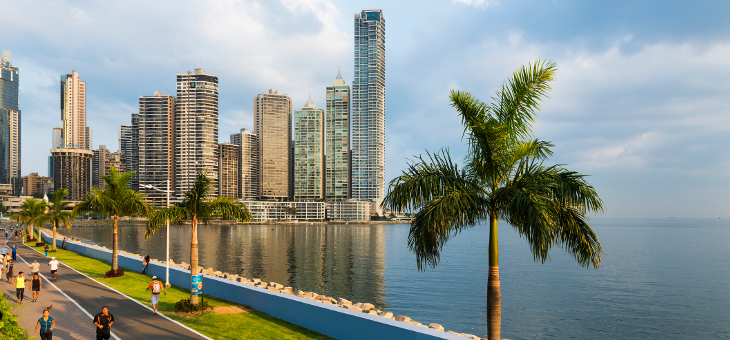Panama: Downgrade of medium- to long-term political risk classification from 3/7 to 4/7

Panama is faced with an increasingly challenging environment
Since the end of the Noriega dictatorship in 1990, Panama has been politically very stable, marked by peaceful democratic transitions. Current President Varela, from the Panameñista Party (PP), took office in 2014. He has followed a pro-business agenda and allowed somewhat more attention to social inclusion. In May 2019, presidential elections will be held and may be closely contested as the two largest opposition parties are currently leading in the opinion polls for the election. Main candidates are all considered to be generally pro-business and the electoral campaign is focusing on fighting corruption and boosting growth. Failure to pass the tax evasion law by the current administration will raise pressure on the next government to avoid Panama from finding themselves back on the Financial Action Task Force (FATF) grey list.
With a population of merely four million, the country’s economic development has been dominated by activity related to the Panama Canal. Besides, the small country is known for its off-shore banking sector and for being a regional logistic and business services hub. Economic expansion has been extraordinary over the past decade and averaged at 7% of GDP growth. After a growth slowdown to 4.3% in 2018, strong FDI inflows (especially from China), the Canal expansion and large public works are expected to help raise GDP growth to an anticipated 6.3% in 2019. However, a probable economic slowdown in the United States and China, as well as the two powers' bilateral trade war, will impact global trade volumes and canal traffic. Moreover, tensions between the Central American region and the United States have been flaring up against President Trump’s hardline anti-migration policies. In addition, there are significant downside risks related to delays in addressing the FATF recommendations and tax transparency initiatives.
The fiscal position remains relatively strong with limited fiscal deficits and low interest payments. The public debt stock, of which 2/3 are held abroad, peaked in 2017 and is projected to moderate to a manageable 40% of GDP in 2019. Panama traditionally has large structural current account deficits – being an import dependent economy – mostly covered by substantial FDI inflows, a non-debt-creating financing source. However, financing shortages to cover these imbalances have been emerging, filled by tapping foreign exchange reserves. Over the past year, foreign exchange reserves came under particular pressure and dropped to merely 0.9 month of import cover by the end of 2018 (3 months being the benchmark for a healthy liquidity position). Nonetheless, Panama uses the US dollar as sole legal tender which mitigates the destabilising impact of low liquidity to a certain level.
Downgrade of the medium- to long-term (MLT) political risk classification from 3/7 to 4/7
Panama’s financial position weakened considerably following a recent surge in the external debt stock (expected around 80% of GDP in 2019, excluding off-shore banking debt), driven by an increase in private indebtedness. Moreover, the external debt services are expected to absorb about 30% of yearly export receipts over the coming years, a significant financial burden. The tightening of the global financial environment might dampen private investment and consumption and appreciate the US dollar, eroding Panama’s competitiveness and exports. Being an open economy dependent on substantial capital inflows, Panama is especially exposed to global trade and financial shocks. Taking into account the worsened financial position and significant downside risks ahead, Panama’s MLT political risk classification was downgraded from 3/7 to 4/7.
Analyst: Louise Van Cauwenbergh – l.vancauwenbergh@credendo.com